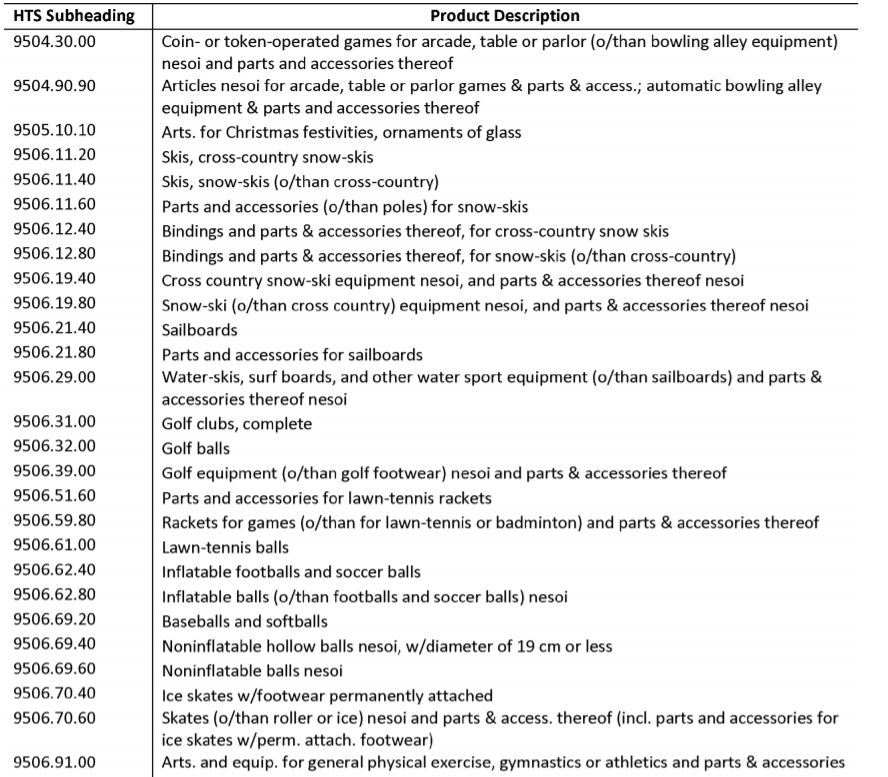U.S. Tariffs Hit Certain Paddleboards, Surfboards From China
28th Oct 2019
UPDATE: As a part of the "phase one" deal with China signed in January 2020, the Trump administration agreed to cut in half the tariffs imposed the previous September. So starting Feb. 14, paddleboards coming to the U.S. from China have a 7.5% import duty.
Let's be honest: When it comes to tariffs on paddleboards and surfboards, most of us are lost at sea.
Everyone knows that President Trump has waged a trade war against China, with tariffs on hundreds of billions of dollars of annual imports. Most people understand that Beijing has retaliated proportionally against U.S. exports. Some surfers and paddleboard fans know their products are in the mix for tariffs. But which ones, and how much is the tariff?
The short answer is that most paddleboards and surfboards imported into the U.S. from China are subject to a 15% duty/tariff starting Sept. 1, 2019.
A brief history
It's all part of an extremely complicated government process that began in 2018 when Trump first authorized tariffs on Chinese imports, part of an investigation that accused Beijing of allowing the theft of American intellectual property and technology.
The first tariffs targeted imports of industrial technology, and the Trump administration was surprised when China retaliated. When initial talks failed to yield a deal, the U.S. hit China with more tariffs. After subsequent rounds there were no more industrial products, and so the two sides began hitting consumer products. Keep in mind that tariffs are essentially taxes charged on goods when they come into the country, so consumers usually end up paying a higher price if the importers, wholesalers and other middle men don't want to eat the expense of the tariff forever--a tall order in competitive industries.

After the G20 summit in Japan, Trump felt betrayed by Chinese President Xi Jinping over the summer and decided to go ahead with consumer tariffs of 10% on Sept. 1, including the ones affecting paddleboards and surfboards.
Here's the catch: in August, right before the tariffs came into effect, China announced plans for retaliation. Trump hit back the same day by raising the planned tariff rate to 15% from 10% and tweeting that American companies are "hereby ordered" to look at leaving China.
Are boards really busted?
It isn't always easy to tell which products are hit by tariffs. Cell phones and clothing make front-page news, but scores of other items can get buried in the bureaucratic paperwork.
Open up the latest China tariff list and search for "paddleboard" and you won't find anything. Some products, such as "live turkeys," are pretty self-explanatory, but some are included in a set of numeric codes that cover just about anything you'd ever want to import.
Lawyers and customs experts often look for creative ways of classifying products to avoid the tariffs.
Unfortunately, there seems to be little question that the "water-skis, surf boards, and other water sport equipment" category includes paddleboards. In a 2013 ruling, U.S. customs assigned paddleboards the tariff code 9506.29.0080, essentially a miscellaneous or "other" ruling that falls under the broader six-digit code 9506.29. If there's still any doubt, importers can take a look at Harmonized Tariff Schedule's Chapter 95, which sets out a broad taxonomy for all sporting goods and games. Fun fact: according to the tariff schedule, while boards from most countries are duty free, if you manage to import a paddleboard or surfboard legally from North Korea or Cuba, you're going to have to pay a 40% tariff, versus just 30% for sailboards.
In general, the U.S. avoids tariffs and taxes on healthy, recreational items, but the China tariffs are hitting almost everybody.
Crestfallen in California
Most Chinese products come into the giant container terminals of Los Angeles and Long Beach, and paddleboards and surfboards are no exception. The difference is that Southern California businesses often design, market ship surfboards and paddleboards to the rest of the country since they're a part of the California beach culture.
Remember that customs code that includes surfboards, paddleboards, and water skis? Well, the U.S. imported $423 million worth of those products in 2018, with more than half ($284 million) coming from China, according to the Commerce Department.
Southern California Sports Industries says environmental rules make it hard to make plastic boards locally, and many vendors are looking to produce the boards in other Asian countries, Reuters reports. Wages (high in California) are also an issue, and some merchants are no doubt looking south of the border to Mexico, which at least for now enjoys duty-free sales to the United States.
Comments or questions about anything at all in this biweekly blog? If so, then please, please email us at info@treeboard.com. Also, when you have a moment you can subscribe below to our Treeboard Log newsletter for updates once a week.


